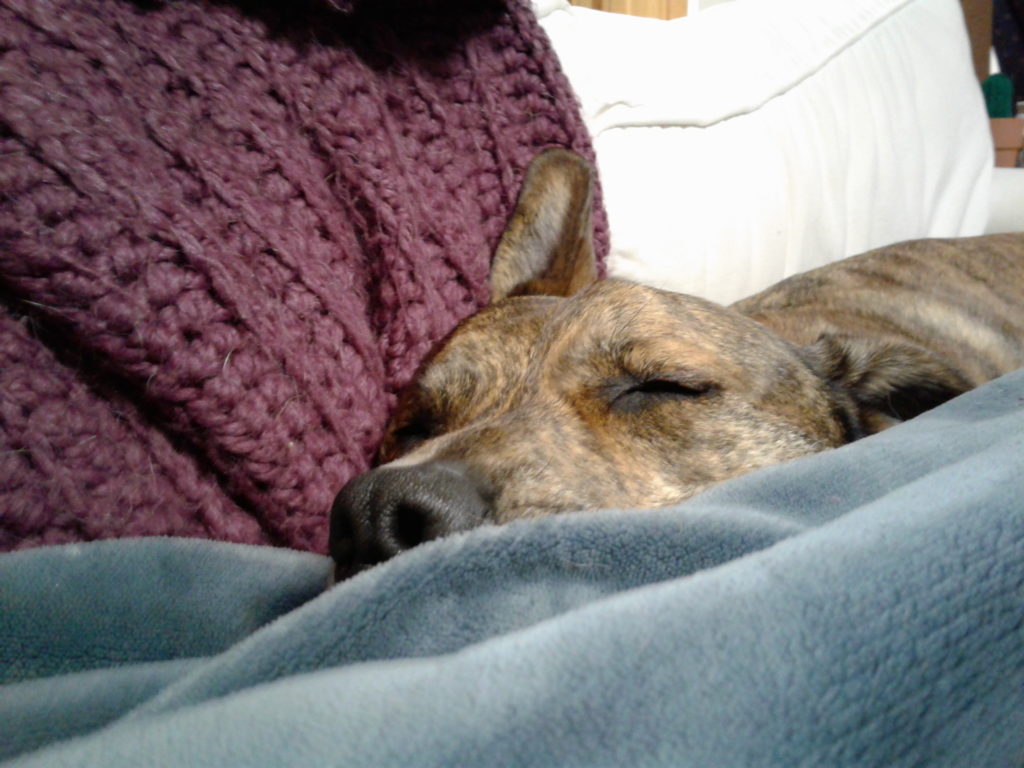I love when people are committed to doing right by their pets. Hearing how much people love for and strive for the best with their pets is one of the things that keeps me going as a consultant. Along with that commitment, though, I see a lot of doubt and worry creep in. Those are the times that I get questions like:
Is it okay that he sleeps in bed with me?
Should I go first through the door?
Does it matter what side he walks on?
Her reactivity on leash makes me not want to take her on walks anymore but I feel like I should…
What cues should I teach him?
All of these boil down to just one question:
What should I do with/for my pet?
My answer, in a nutshell, is: whatever you’d like to. Of course there’s a bit more to it than that. Really the answer is, “Whatever works for you, your family, your situation and keeps the animal and others happy, safe, and physically, mentally, and behaviorally healthy.” There’s quite a bit of stuff that we do as pet owners that doesn’t necessarily keep our pets mentally and behaviorally healthy but that’s a discussion for another time.
In an effort to do the best for our pets we fall into this thinking that there’s one right and proper way to go about meeting this goal. Our society encourages this viewpoint that there’s one right way. The truth is that there are a lot of ways that we can keep our animals happy, safe, and physically, mentally, and behaviorally healthy and what works for one household doesn’t always work for another.
Let’s take dogs jumping up on the furniture, for example. Many people sheepishly tell me that they let their dog onto the furniture, usually quickly followed by, “I know I probably shouldn’t let him.” To which I tell them that I don’t mind either way! The look of relief on their face always makes me smile.
I then tell them that Oso has very specific furniture rules that work for our family. He’s always allowed on the couch at our house but never at my mom’s. He’s allowed on our bed any time during the day or if we invite him up at night but never when we go to sleep. He is then allowed to get on the bed in the morning regardless of whether we invite him or not. It’s what makes sense for us but those specific rules likely don’t make sense for everybody.

Another example is training basic cues. I often get people telling me (again, sheepishly) that they’ve never trained their previous dogs. They want to train their new dog and want to know what to work on. My question is always, “What do you want the dog to do?” That question usually elicits some blank looks because they knew that they *should* get their dog trained but didn’t really know what they wanted out of that.
We then discuss that training helps teach animals how to live in our world (and is good for mental exercise) so there’s no set rule of what we teach. Again, it’s dependent on the animal and the household. If you don’t want to go into formal obedience or rally then there’s not really a point to devoting effort on teaching a proper “heel”. If the dog doesn’t grab items willy nilly then they might not need to learn “leave it”. All of those cues are helpful to getting a behavior that you want but aren’t imperative to living a healthy and happy life.
My challenge to you is to get rid of “should”. Ignore what everyone (except your vet and behavior consultant) is saying you should do with your pet and look at what you and your pet actually need. Hate walking with your pet but both of you love playing fetch in the fenced-in yard? Go for it. Fetch is often better than walking for physical exercise. Love cuddling on the couch with your pet? Go for it. Unless your pet is guarding the couch from you then there’s no harm done. Figure out what makes you and your pet happy together and do that.
Now what?
- Think about one thing that you do in relation to your pet that you don’t particularly enjoy. Is it not letting them jump up to greet you when you come home? Is it taking your reactive dog for long walks?
- Consider if that activity is actually beneficial. If you’re not letting them jump up on you when you come home and they haven’t been jumping on guests then that might be beneficial. If you’ve been taking your reactive dog for long walks for months and their reactivity is still not better then it’s not likely beneficial.
- Figure out a more beneficial and attractive solution. For jumping, you could teach your dog to jump up on a cue. That way you get your coming home snuggles and your guests get a polite greeting. For reactivity, contact a behavior consultant to help with the issue and play in the yard or in the house for physical exercise in the meantime.
- Reevaluate after you’ve implemented your more attractive solution: is it beneficial? Are you and your pet happier and physically, mentally, and behaviorally healthier? If so, huzzah! Keep at it. If not, repeat the above steps.
Happy Training & Happy Holidays!
Allie
